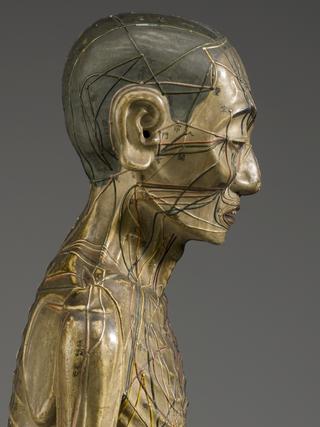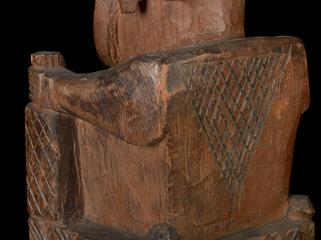




Wooden netsuke, in the form of a decapitated man's head, Japanese, 1701-1900
This tiny wooden netsuke is in the form of a decapitated man’s head. It is highly detailed for such a tiny object. His hair is swept in to a top-knot, veins bulge on his forehead and the vessels in his severed neck are clear and anatomically correct. Beheading was a common punishment in Japan. Perhaps this netsuke illustrates a certain level of black humour.
Netsuke are toggle-like ornaments. They hang objects such as medicine boxes or tobacco pouches from the sash of a kimono – a traditional form of Japanese dress. Netsuke carving is a form of miniature sculpture which developed in Japan over several hundred years. They were often beautifully decorated with elaborate carving, lacquer work, or inlays. They were made from wood, ivory or porcelain. Japanese characters carved on the netsuke show it was carved by an individual called Keizan.
Details
- Category:
- Asian Medicine
- Collection:
- Sir Henry Wellcome's Museum Collection
- Object Number:
- A114948
- Measurements:
-
overall: 40 mm x 35 mm x 40 mm, .02kg
- type:
- netsuke
- credit:
- Glendining




